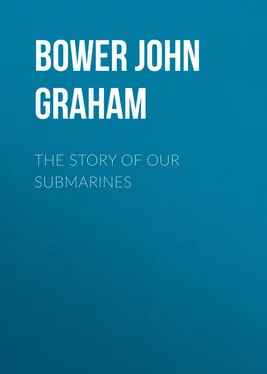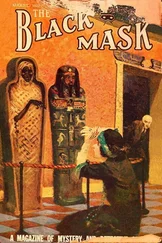John Bower - The Story of Our Submarines
Здесь есть возможность читать онлайн «John Bower - The Story of Our Submarines» — ознакомительный отрывок электронной книги совершенно бесплатно, а после прочтения отрывка купить полную версию. В некоторых случаях можно слушать аудио, скачать через торрент в формате fb2 и присутствует краткое содержание. Жанр: foreign_antique, foreign_prose, foreign_language, на английском языке. Описание произведения, (предисловие) а так же отзывы посетителей доступны на портале библиотеки ЛибКат.
- Название:The Story of Our Submarines
- Автор:
- Жанр:
- Год:неизвестен
- ISBN:нет данных
- Рейтинг книги:4 / 5. Голосов: 1
-
Избранное:Добавить в избранное
- Отзывы:
-
Ваша оценка:
- 80
- 1
- 2
- 3
- 4
- 5
The Story of Our Submarines: краткое содержание, описание и аннотация
Предлагаем к чтению аннотацию, описание, краткое содержание или предисловие (зависит от того, что написал сам автор книги «The Story of Our Submarines»). Если вы не нашли необходимую информацию о книге — напишите в комментариях, мы постараемся отыскать её.
The Story of Our Submarines — читать онлайн ознакомительный отрывок
Ниже представлен текст книги, разбитый по страницам. Система сохранения места последней прочитанной страницы, позволяет с удобством читать онлайн бесплатно книгу «The Story of Our Submarines», без необходимости каждый раз заново искать на чём Вы остановились. Поставьте закладку, и сможете в любой момент перейти на страницу, на которой закончили чтение.
Интервал:
Закладка:
7.25 A.M. Sighted German cruiser, Stettin class, hull down, E.N.E., beam on, steering N. (approx.). Dived E. by N. 1 mile to avoid being seen; cruiser too far off to attack.
8.5 A.M. Rose. Sighted trail of smoke and yellow funnel, E.N.E.
Dived to attack, course N. 30 W., full speed.
8.55 A.M. Abandoned chase, enemy steaming very fast west (approx.).
Dived to avoid steam trawler, which had passed over boat during attack.
9.45 A.M. Rose. Proceeded to westward charging batteries.
11.30 A.M. Stopped. Charged on surface.
1.15 P.M. Proceeded S. 72 E., 12 knots.
2.45 P.M. Dived to avoid steam trawler, remaining on course S. 72 E.
3.40 P.M. Rose.
3.50 P.M. Sighted German large T.B.D., or flotilla cruiser, 10 miles to northward, steaming very fast E. Too far off to attack.
4.15 P.M. Proceeded S. 51 E., 12 knots.
5.45 P.M. Position W. ¾′ N. 23′ from Heligoland. Nothing in sight except numerous trawlers, chiefly sailing. Turned to N. 60 W., 9 knots. Sea rough.
8.10 P.M. Increased to 10½ knots. Many trawlers in sight at nightfall.
9.30 P.M. Stopped. Dived 50 feet on "grouper down" till —
August 7th —
2 A.M. Rose. Very dark; dived 50 feet.
3.15 A.M. Rose.
3.30 A.M. Proceeded under one engine, 8 knots, working round a large fleet of sailing trawlers making to southward; making for route of warships seen yesterday.
6 A.M. Altered course 12 knots.
7.45 A.M. Altered course S.E.
8.15 A.M. Sighted German submarine on surface, S.E. 4 to 5 miles distant, beam to beam. Dived to attack. At first thought she was stopped and had then dived, not sighting her through periscope till 8.45.
8.45. A.M. Sighted her steaming west, 4 or 5 miles off. Followed, diving.
9.30 A.M. Rose. Submarine not in sight. Followed, diving, for ¾ hour, in hopes of finding her stopped.
10.30 A.M. Proceeded S. 56 E., 12 knots.
12 noon. Stopped to let steam trawler pass across horizon, ahead.
Note. – Since about 7 A.M. I had given up the idea of trying to keep out of sight of trawlers, merely avoiding going within a mile of them.
12.10 P.M. Proceeded.
12.54 P.M. Altered course south, observed position being further north than intended. The steam trawler sighted at noon seemed suspicious of E 6, altering course so as to keep me in sight without getting close.
3.30 P.M. Turned and steered for trawler, signalling her to show colours (German), and to stop. Trawler fitted with W/T. Crossed her bows and shaped course N. 87 W., 14 knots. Position then N. 43 W. 37′ from Heligoland. Trawler proceeded, apparently shaping course for Emden. Steered to avoid our T.B.D. patrol.
August 8th —
6.30 A.M. Made Swarte Bank Light-vessel. Proceeded to Lowestoft to report.
Note. – The Heligoland Bight contained a very large number of trawlers, chiefly sailing, including a few which were apparently Dutch; they became more numerous closer in to Heligoland. I did not notice W/T in any except the one I spoke.
I have the honour to be, sir, your obedient servant,
(Sd.) G. P. Talbot, Lieutenant-Commander.The Commodore (S),
H.M.S. Maidstone .
That is the sort of way the submarine officers describe their experiences. The method is curt and unsatisfying somehow. I will try and give an idea of a submarine captain describing a trip during, say, the winter of 1915-1916, to an army brother: —
Yes, we got in yesterday. No – we had no luck. It's getting dull inside there now; it's not so much fun if there are no big ships about and only small craft chasing you. Well, you see, we left about 4 P.M. on Monday and had a poor sort of trip across – blowing from the north-east, so that we were head to sea, and even at eight knots we took nearly every wave over the bridge. They're a fine sight though, the E boats, when they're butting into it like that; they get out of step so, and you can feel just about when they are going to take a good one; you see more and more of her bow going dry as she goes wrong, and then she puts a great length of herself over a hollow, and that's the time to duck your head and hold tight to a rail, because she comes down wallop just in time for the next one to roll right over you. It was fairly clear, but devilish cold, and there were snow-squalls about one to the half-hour. We gave Terschelling (the corner, you know, round Holland into the Bight) a seventeen-mile berth, as the tide sets in pretty strong there, and turned in for our billet. My orders were to work between Heligoland and the mouth of the Elbe. There are two ways of getting in, you see – close along the shore in seven-ten fathom water, and over and under the minefields farther out. We took the deep channel, as we don't do the other at night if we can help it – over and under? Oh! you see, there's a minefield set for submarines in one place – fairly deep laid, and farther on another set for surface ships, so we go over one and dive under the other – anyhow, they're both only reported fields, and their position isn't accurately known, and also one doesn't quite know one's position if one doesn't get sights or see Terschelling Light, so it's a matter of luck, really. Well, we didn't get any excitements going in, except that my R.N.R. officer pressed the button with his shoulder when he was coming up to relieve me, and he and I only got down just in time to shut the lid. You see, we run with mighty little buoyancy on patrol when we are on the surface, and if you press the button you go down in a few seconds at twelve knots or so. The button? why, that's what dives the boat; if you press that (it's just under the conning-tower lid) it rings the Klaxon horns fore and aft the boat, and then it's up to you to come down quick because the crew know it means business, and they don't waste any time. They open all vents and put her nose down, and in a few seconds there's just a 'plop' on the surface and you're looking at a gauge-needle going round down below. But if you come on watch with too many lammies and clothes on, you may give the alarm by mistake like my feller did.
"Well, we got better weather after we rounded Terschelling, and after Borkum Riff it was nearly calm. We got to the billet and dived at 4 A.M. – thirty-six hours out from Harwich. The soundings were right when we touched bottom – about 95 feet – so that checked our latitude a bit. Then we all went to bed. It was pretty cold and jolly wet too, as she leaks a bit overhead besides the usual sweating. What's sweating? Why, when the hull's cold it sweats, you know – water runs down the inside – condensation really, I suppose. Well, then we all turned in, as I say, and I put a lot of blankets over me to dry my wet clothes… I was too tired to change, and as a result I was all aches in the morning (that is, at daylight about three hours later). I reckoned it would be getting grey about seven, so we rose then, and after a few minutes at fifty feet, just to listen for propellers, we broke surface. It was all clear and still fairly dark, so we charged batteries for twenty minutes and ventilated.
"Then we went under and started diving patrol. I took first periscope watch, as I wanted to fix position by steering north-west for Heligoland. At eight o'clock the patrol trawlers came by. You see, they have eighteen trawlers out between Schillig Road and the Island. They work in pairs, each pair doing a sort of sword-dance, and making Saint Andrew's Crosses along the line. They come out in the morning, and we just sheer out of their way to let them by. Then at sunset they all begin edging towards home (that's Wilhelmshaven), until the senior one hoists a signal, and they speed up and hustle into bed. No, we don't worry them – we haven't enough torpedoes to chuck them away on trawlers; and anyhow, you may miss a chance at something big if you get seen on your patrol. Those small craft don't see you unless you worry them. One dives around all day with several of them in sight, but so long as one doesn't show the periscope much, and doesn't get too close, they don't see. If we once started strafing them, they'd keep a better look-out, but nobody keeps a good look-out unless he's scared – so we don't scare them.
Читать дальшеИнтервал:
Закладка:
Похожие книги на «The Story of Our Submarines»
Представляем Вашему вниманию похожие книги на «The Story of Our Submarines» списком для выбора. Мы отобрали схожую по названию и смыслу литературу в надежде предоставить читателям больше вариантов отыскать новые, интересные, ещё непрочитанные произведения.
Обсуждение, отзывы о книге «The Story of Our Submarines» и просто собственные мнения читателей. Оставьте ваши комментарии, напишите, что Вы думаете о произведении, его смысле или главных героях. Укажите что конкретно понравилось, а что нет, и почему Вы так считаете.












